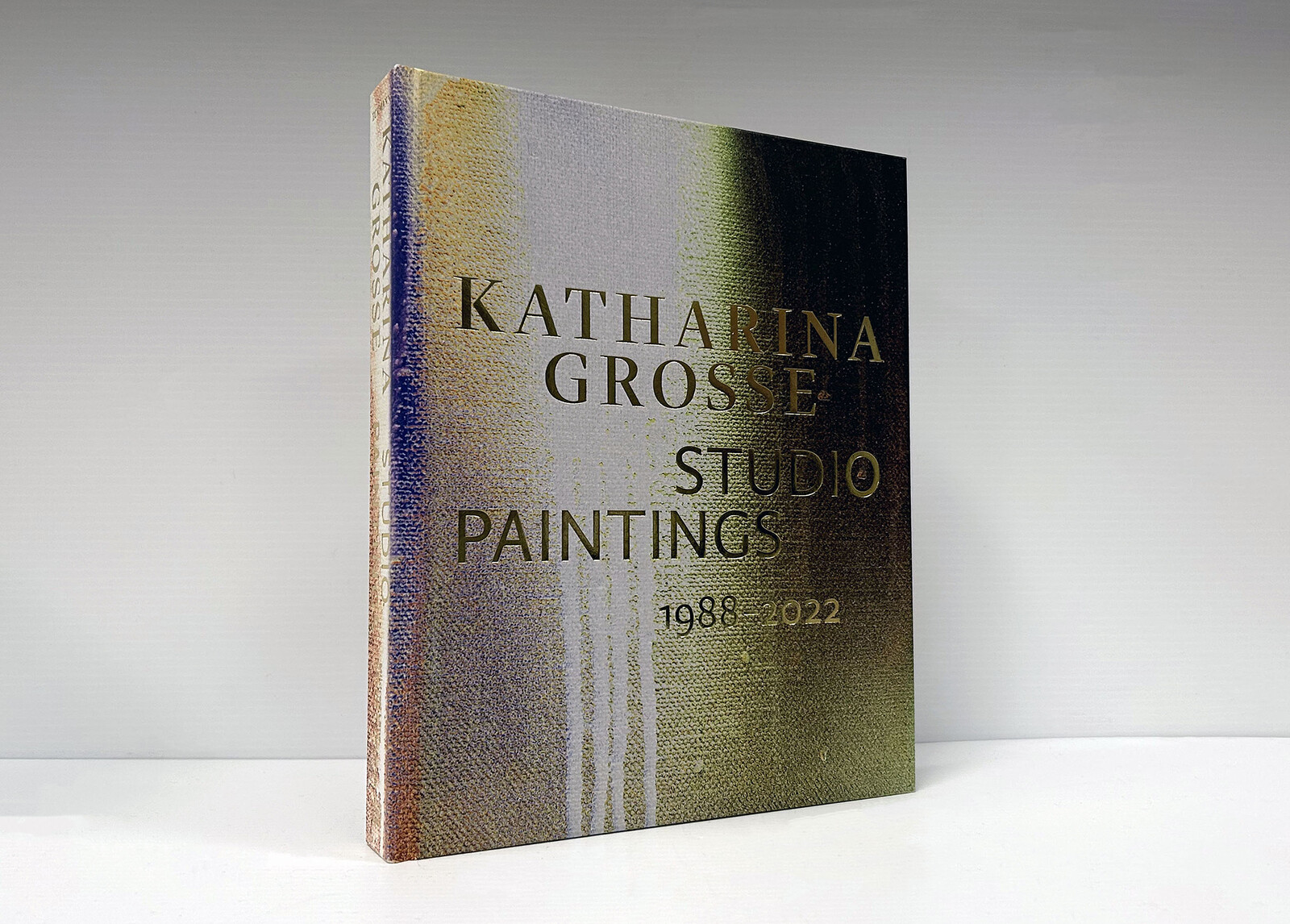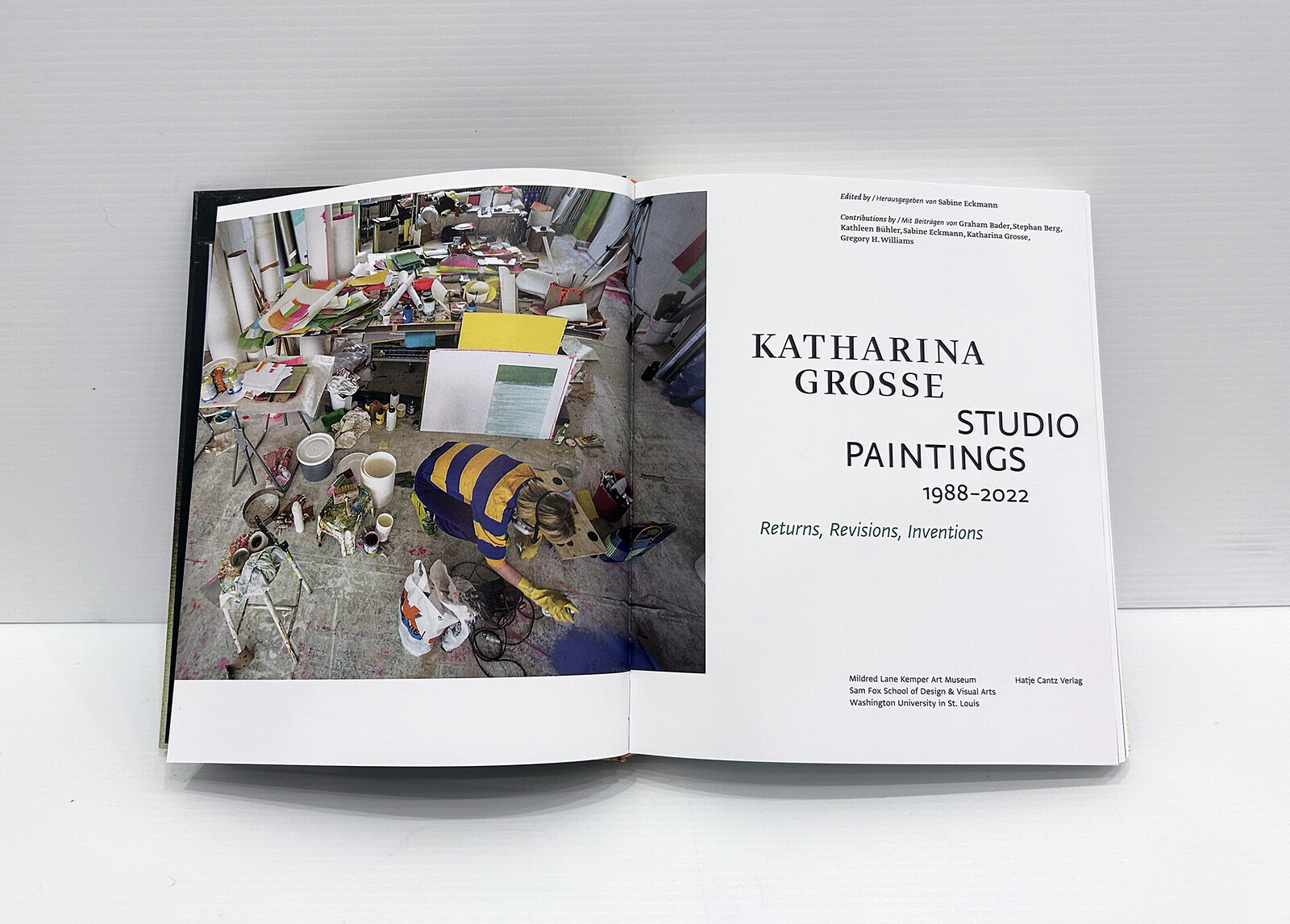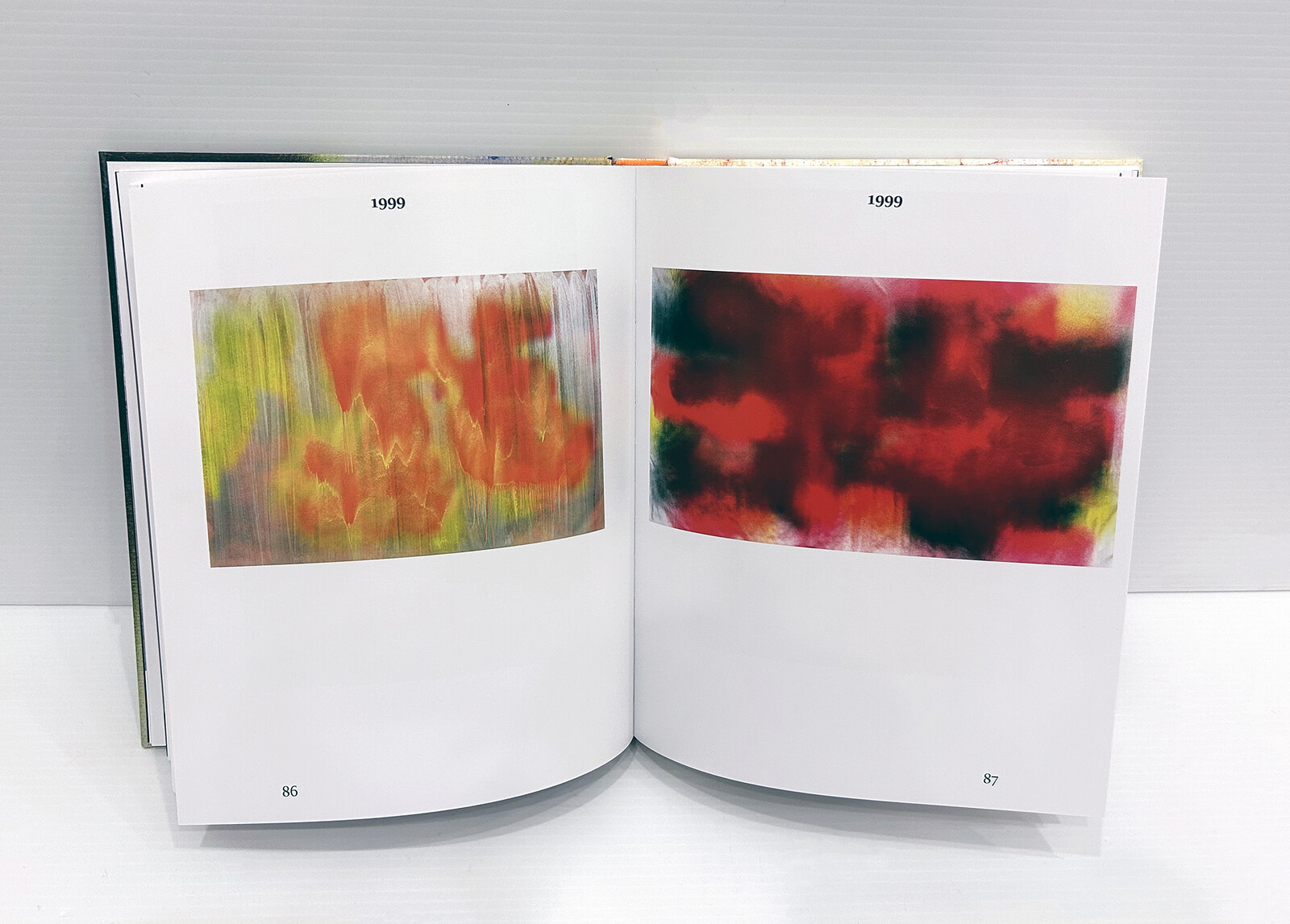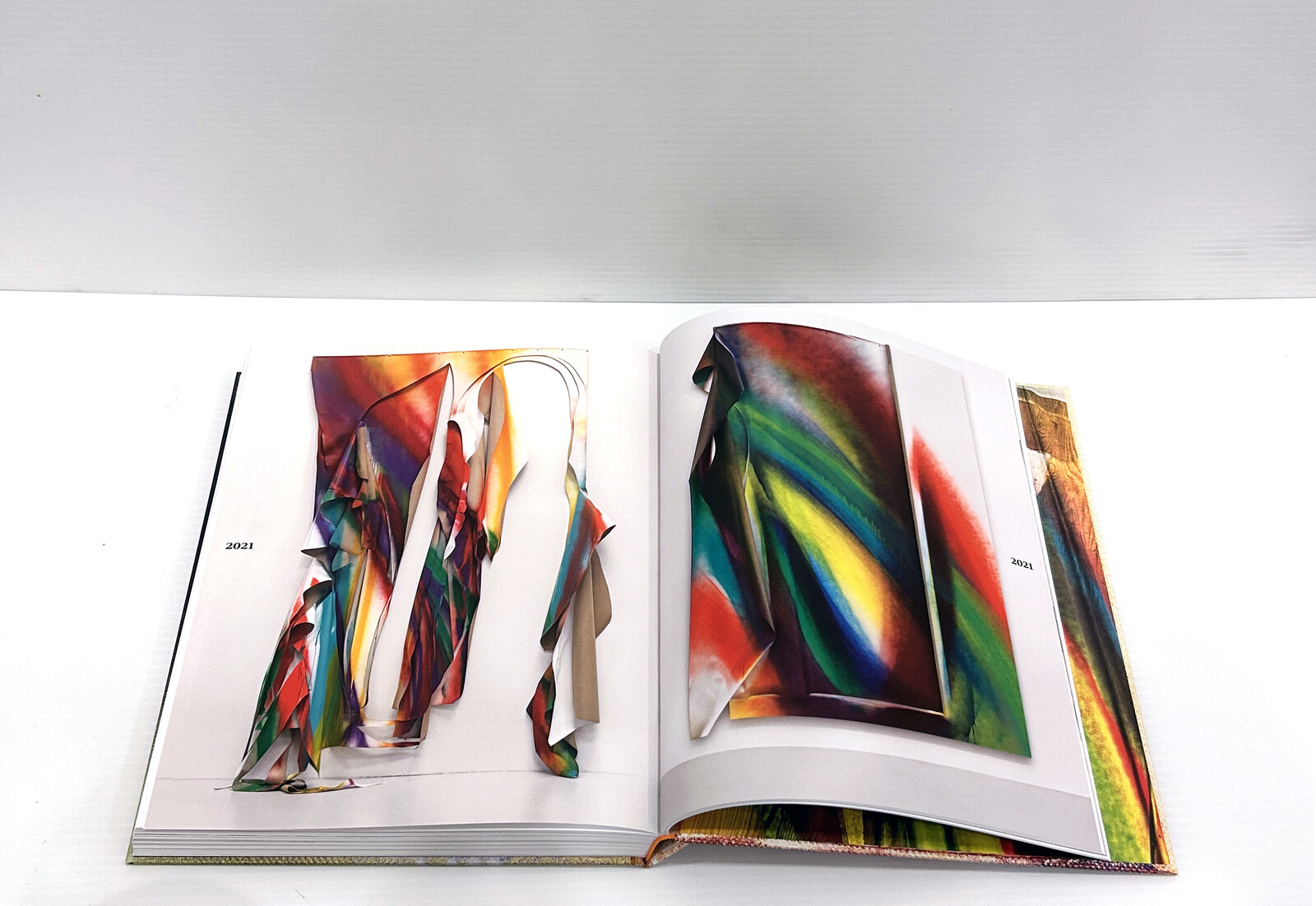Katharina Grosse is internationally celebrated for her large-scale, on-site works that she paints across built and natural environments. To date, less focus has been placed on her studio-based paintings. Co-published by Hatje Cantz and the Mildred Lane Kemper Art Museum at Washington University in St. Louis, Katharina Grosse Studio Paintings, 1988–2022: Returns, Revisions, Inventions is the first publication to explore these important canvases and the role they play in the artist’s oeuvre.
Published on the occasion of the Kemper Art Museum’s exhibition of the same name, Katharina Grosse Studio Paintings, 1988–2022 brings together 160 full-color plates and 38 supplemental images documenting the artist’s career-long studio practice. The bilingual (English and German) publication serves both as a reference book and as a critical exploration of Grosse’s experiments with color and paint. Five scholarly essays and an insightful interview with the artist investigate how she expands the concept of painting by removing the limitations of the traditional frame and rethinking foundational concerns at the heart of the medium.
Order Katharina Grosse Studio Paintings, 1988–2022 now.
From the beginning Grosse has conceived her studio canvases side by side with her on-site paintings. Despite the expansive and nonprogrammatic ways she stretches painting’s capacities and delves into its paradoxes, the intellectual force of her paintings nonetheless derives from their position within and against the long and complex legacy of the medium. She challenges the notion of a painting as a discrete, singular object and the act of painting as independent from the social fabric of the everyday.
Grosse views painting as a prototype of human activity, akin to the ways we relate to and experience the world. She experiments with processes and tools that restrain artistic authorship and control, such as using unmixed industrial paints, employing stencils, attaching the paintbrush to a long stick, spraying paint, and walking onto the canvas. In sweeping movements that continue beyond the edge of the canvas, she develops complex layers and dramatic streaks, drips, and mists of color. This open-ended process unsettles relations between surface and subsurface, above and below, visible and invisible. Grosse revises and reinvents the textures, shapes, surfaces, and color combinations of earlier works in her ongoing practice. She also works on several paintings at once—a performative act in which each canvas constitutes a fragment of a larger whole—and incorporates bits and pieces of nature, including dirt, kelp, and tree branches, into the paintings. With this extensive testing of the boundaries of painting, especially the loosening of ties between the artist’s hand, the paint, and the canvas, Grosse opens the artwork up to the world and vice versa.
Contents
“Katharina Grosse: Returns, Revisions, Inventions,” (“Katharina Grosse. Wiederholungen, Revisionen, Neufindungen”) by Sabine Eckmann, William T. Kemper Director and Chief Curator at the Mildred Lane Kemper Art Museum, Washington University in St. Louis, Missouri.
“Sizing Up the Picture: Katharina Grosse and Painting after 1990,” (“Das Bild taxieren. Katharina Grosse und die Malerei nach 1990”) by Gregory H. Williams, Associate Professor of the history of art and architecture at Boston University, Massachusetts.
“Platform Economies: Katharina Grosse in the Digital Age,” (“Plattformökonomie. Katharina Grosse im digitalen Zeitalter”) by Graham Bader, Professor and Chair of art history at Rice University, Houston, Texas.
“Performing Painting,” by Kathleen Bühler, Chief Curator and Head of Collection, Exhibitions, and Research at the Kunstmuseum Bern.
“The Freedom of Uncertain Places,” (“Die Freiheit der unsicheren Orte”) by Stephan Berg, Director at the Kunstmuseum Bonn.
“‘All I wanted to do was paint’: A Conversation between Katharina Grosse and Sabine Eckmann” (“‘Ich wollte unbedingt malen’. Ein Gespräch zwischen Katharina Grosse”).
The publication accompanies the exhibition, Katharina Grosse Studio Paintings, 1988–2022: Returns, Revisions, Inventions, curated by Sabine Eckmann, William T. Kemper Director and Chief Curator of the Mildred Lane Kemper Art Museum, in collaboration with the artist. The exhibition is on view at the Kemper Art Museum September 23, 2022–January 23, 2023, at the Kunstmuseum Bern March 4–June 25, 2023, and at the Kunstmuseum Bonn April 25–September 1, 2024.










